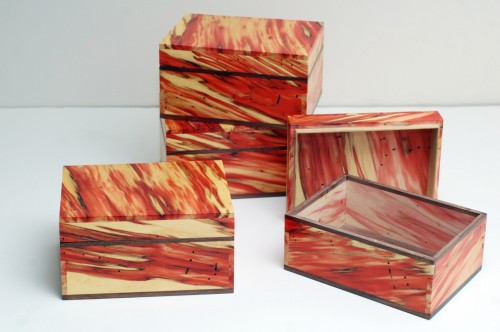Welcome back, everybody! I hope the holidays went well. There is a lot of great stuff on the way for this blog as we count down to the release of The Prop Building Guidebook, one of the first guides to building props to be published in a decade, and one of the most complete ever.
Today, I wanted to show off some boxes I made as Christmas gifts. These were done awhile ago, but I did not post them because the recipients read this blog. It was interesting working with “nice” wood and building an item the “real” way, because it makes you realize how many shortcuts you can take in prop making, and how much you can get away with when an object is only viewed at a distance from the audience.
Not that the props I and others make aren’t well-made; frequently, they are sturdier and more polished than many items you can find in the store. But there is a difference when the item you are making will be held up close, and any joints that are a bit proud can actually be felt, or an errant glue drip on the inside will be studied closely.

I used an exceptional piece of box elder for these boxes. You can see in the open box above, the inside is completely unfinished. The polyurethane coating adds a bit of contrast and depth to the surface, but otherwise, that is the natural color of the wood. The red streaks comes from a fungal growth. Box elder is rarely harvested commercially, because it grows in flood plains. Many people do not realize it can look like that on the inside, so they just burn it as firewood or turn it to mulch when they need to get rid of a box elder tree that has fallen down or died.
I found my pieces at a local sawmill that specializes in salvage lumber. The sawyer had rescued a bunch of box elder trees when the park services cleared a riverfront. My wife and I saw this wood at a wood show awhile back and were asking questions about it. The next day, we returned to the show and the sawyer had set aside some particularly bold pieces of the box elder for us.

I used a piece of walnut for the bottom and as an accent around the lid opening. The boxes were cut entirely on my table saw. As I mentioned above, I finished them with a few coats of polyurethane; specifically, I used spar varnish because it imparts a lot of UV protection. The red coloring will actually fade away when left in direct sunlight, which would be a shame.
